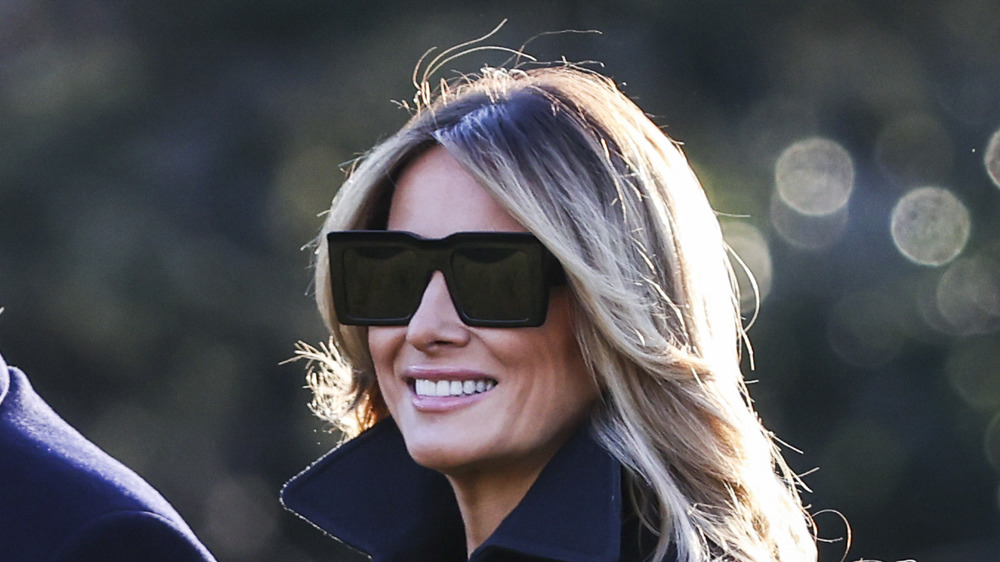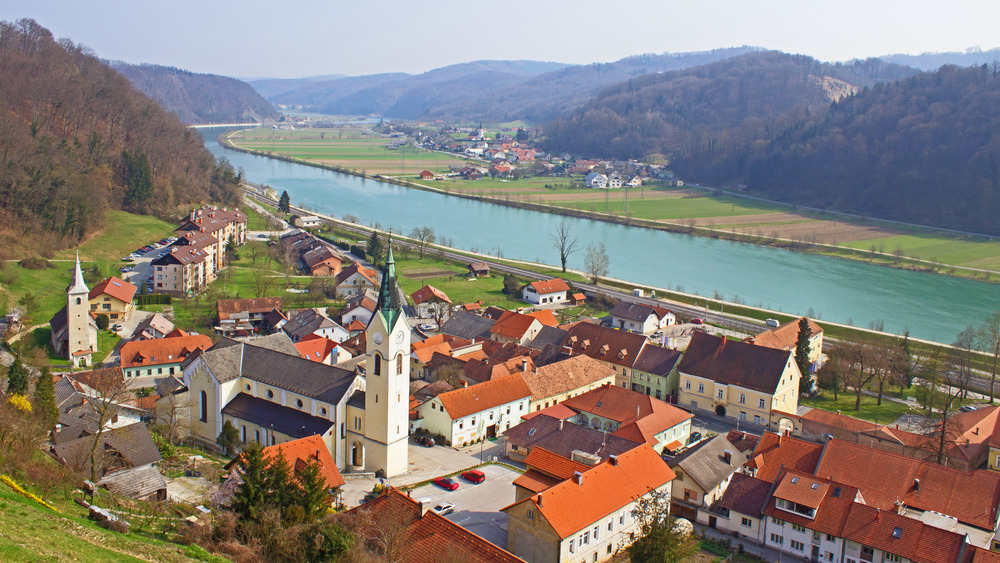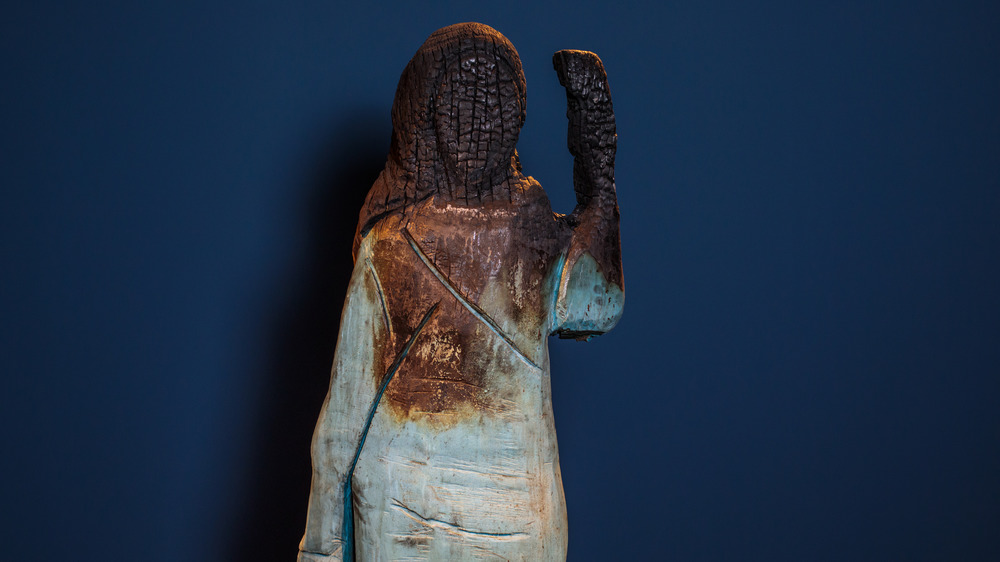The Untold Truth Of Melania Trump's Home Town
She and her husband may have hoped for another four years in the White House, but come January 20, 2021, First Lady Melania Trump will have to say goodbye to the home where she uprooted Jackie Kennedy's Rose Garden, among other controversial decisions during her time there. (Actually, according to a February 2017 report by US Weekly, a source close to the family said that she was "miserable" in the White House, so she's probably not going to miss it one bit.) The soon-to-be former first lady was no stranger to controversy during her four years of sharing the spotlight with soon-to-be former President Donald Trump. In addition to her weird renovations of the presidential manor, she also made some rather odd (read: racist and insensitive) fashion choices, like the obvious sartorial shout-out to Africa's violent colonial past she wore on a safari in Kenya, as Vox reported, or the jacket she wore to visit detained migrant children that read, "I really don't care. Do U?" per The New York Times.
According to CNN, her last contentious decision as first lady was her failure to invite the incoming FLOTUS, Jill Biden, to the White House for the customary tour. Now that she's finally getting away from the house in which she never even wanted to live in the first place, let's go back to Melania Trump's roots and take a quick tour of her home town of Sevnica, Slovenia, to see where she came from.
A brief history of Melania Trump's hometown, Sevnica, Slovenia
The local tourism board describes Sevnica as a market town that has seen its fair share of outside rulers, from the Romans to the Hungarians to the Habsburg Monarchy. It first appears in the historical record in 1256, then named Lichtenwald, when the region was under the rule of the Archdiocese of Salzburg. Invasions by Turks and peasant revolts led to the construction of a fortified castle atop a hill, beneath which the village grew. Numerous fires that razed the main square and the ravages of the bubonic plague also took their toll on Sevnica during its centuries-long history.
When the railroad reached town in 1862, Sevnica began to expand and industrialize, and by the dawn of the 20th century, it had developed more than any other town in its region. World War II brought significant devastation to Sevnica, however. Hitler annexed the region, replaced locals with ethnic Germans, and sent many to die in concentration camps. According to Voice of America, several mass graves in the area attest to the atrocities of this dark chapter in Sevnica's history. After the war, Sevnica once again returned to being an industrial and commercial hub in the region. And in the 21st century, a new industry popped up: tourism based on Sevnica's status as Melania Trump's hometown. As CNN reported, locals use her fame as first lady to sell everything from cakes and pies to sausages, red wine, and onion seeds.
Not everyone in Sevnica is a fan of Melania Trump
While lots of folks in Sevnica seem to like the fact that one of their own made it all the way to the White House (or at least don't mind using that to their economic advantage), not everyone in town is on the Melania Trump train. According to the BBC, a new bronze statue that the artist claimed "represents" Mrs. Trump (we'll take his word for it) was put up in the town in September 2020. But while erecting a statue in someone's honor is an obvious sign of reverence, the reason they had to put up a new one was because someone burned the previous wooden one in January 2020. The culprits were never found, so their motives can't be fully explained, but some in town said that the original statue, carved by a local chainsaw artist, was a "disgrace" that more closely resembled "Smurfette" than the swimsuit model-turned-FLOTUS the town is so proud of.
Whether the arsonist was attacking the subject of the statue or the Slovenian artist who made it is still unclear, but the American artist who commissioned the original piece put the charred Smurfette on display in Slovenia, saying rather redundantly that it "represents a visual representation of political tensions that are erupting in my country." (What, were you expecting eloquence from such an — ahem — artist?)


